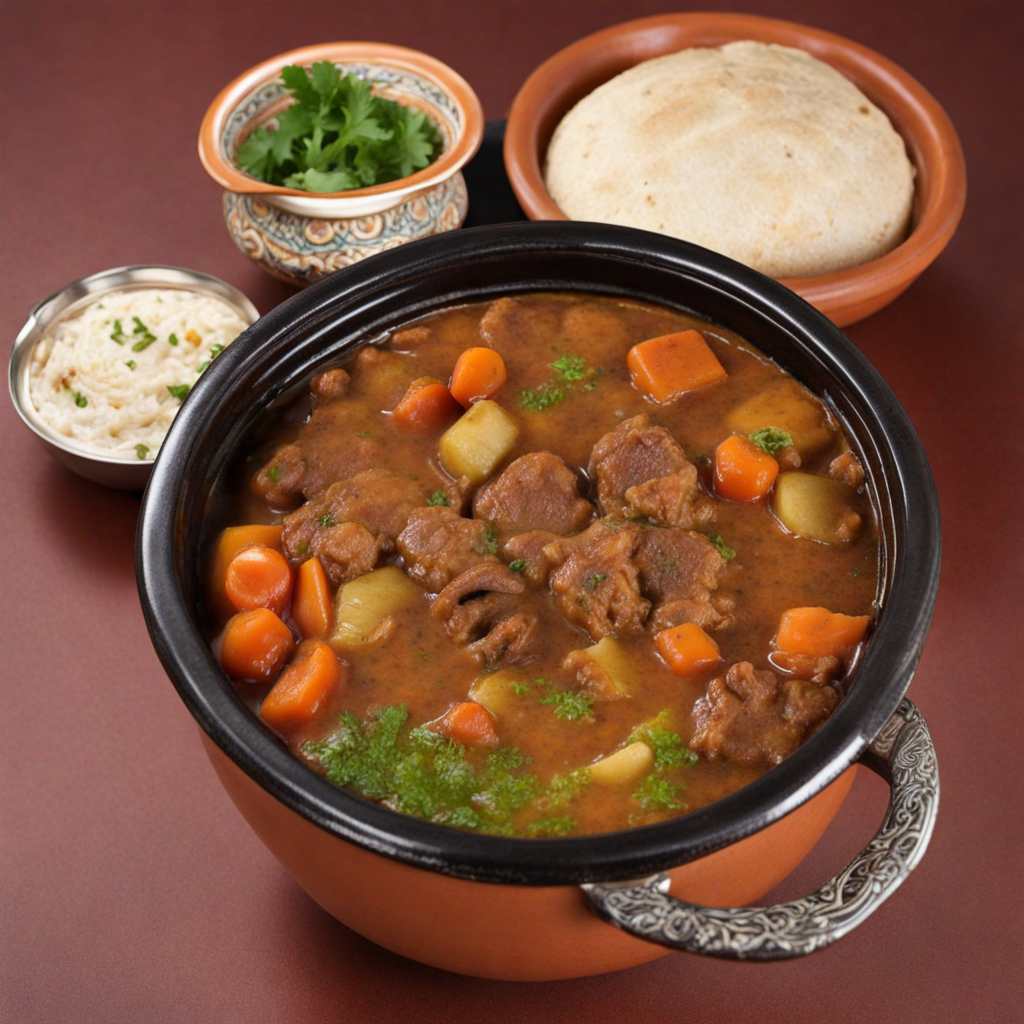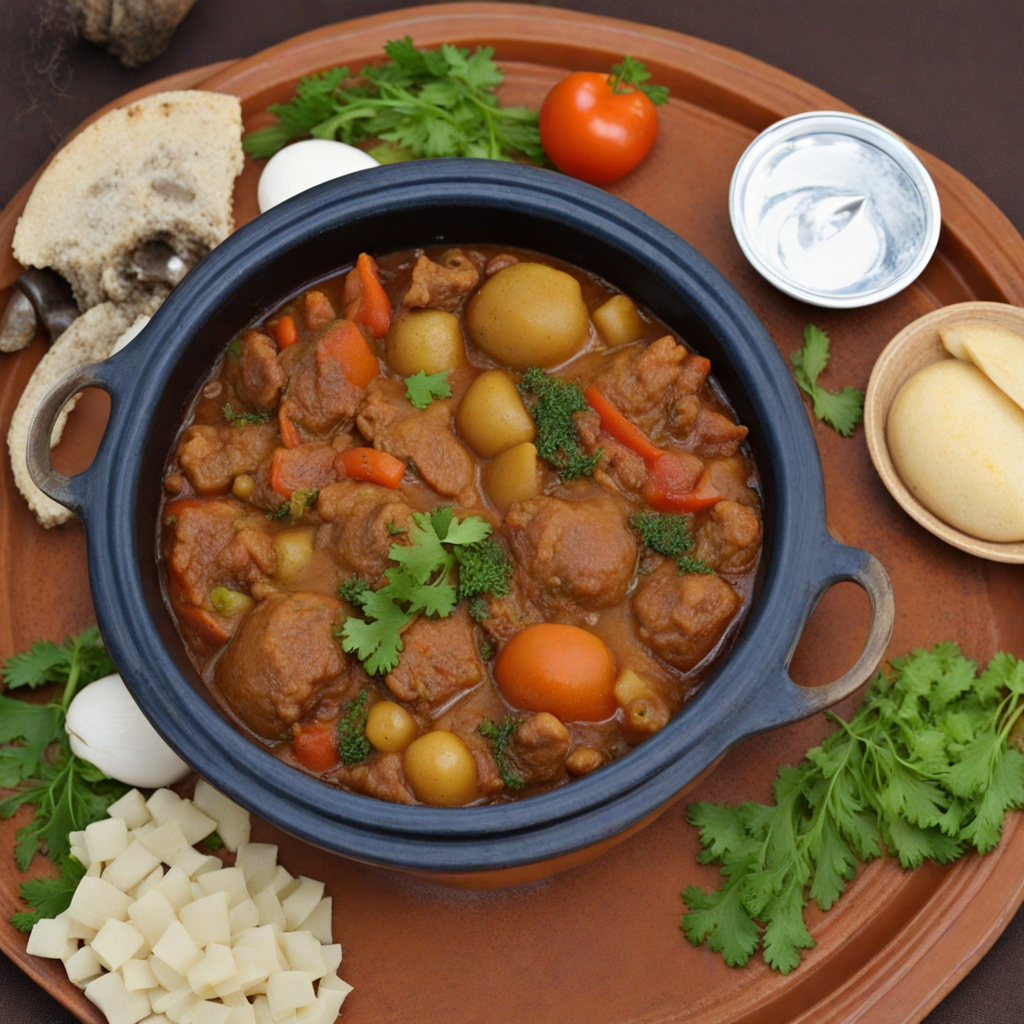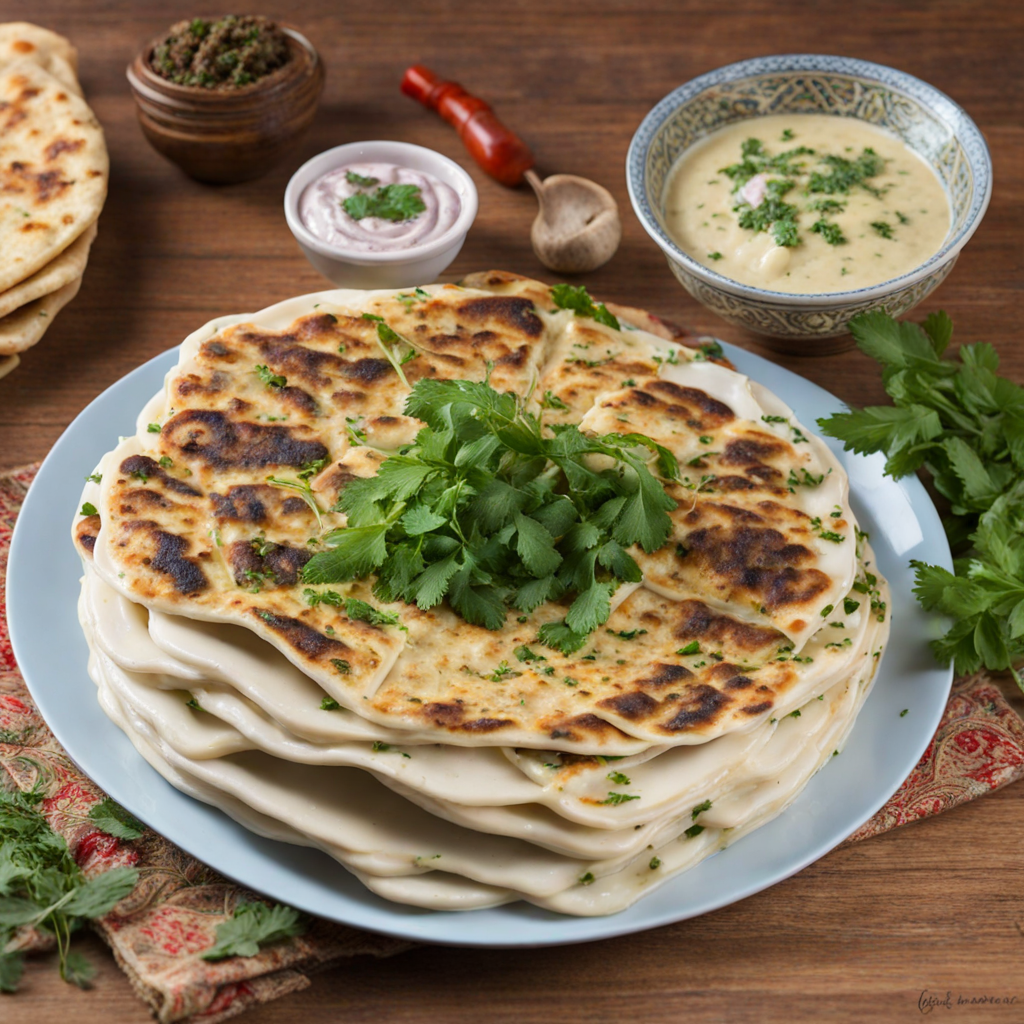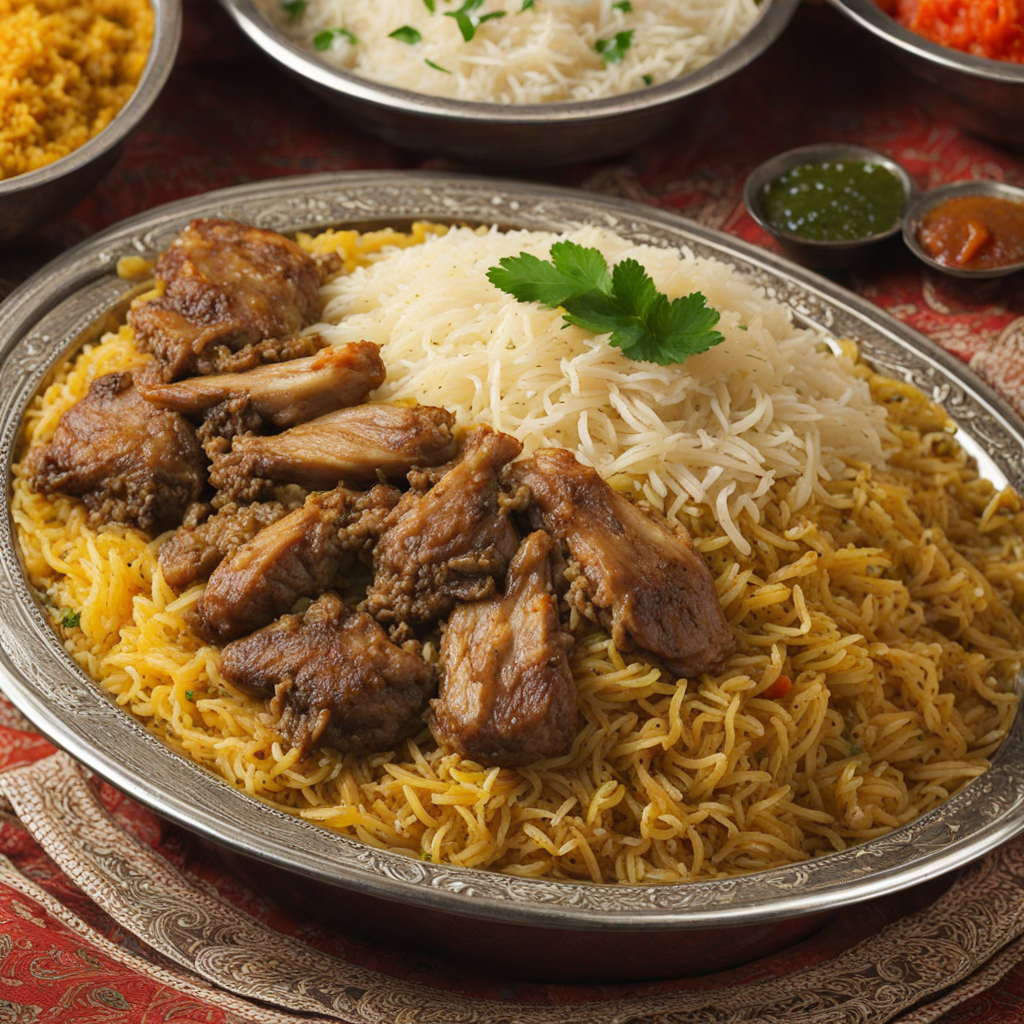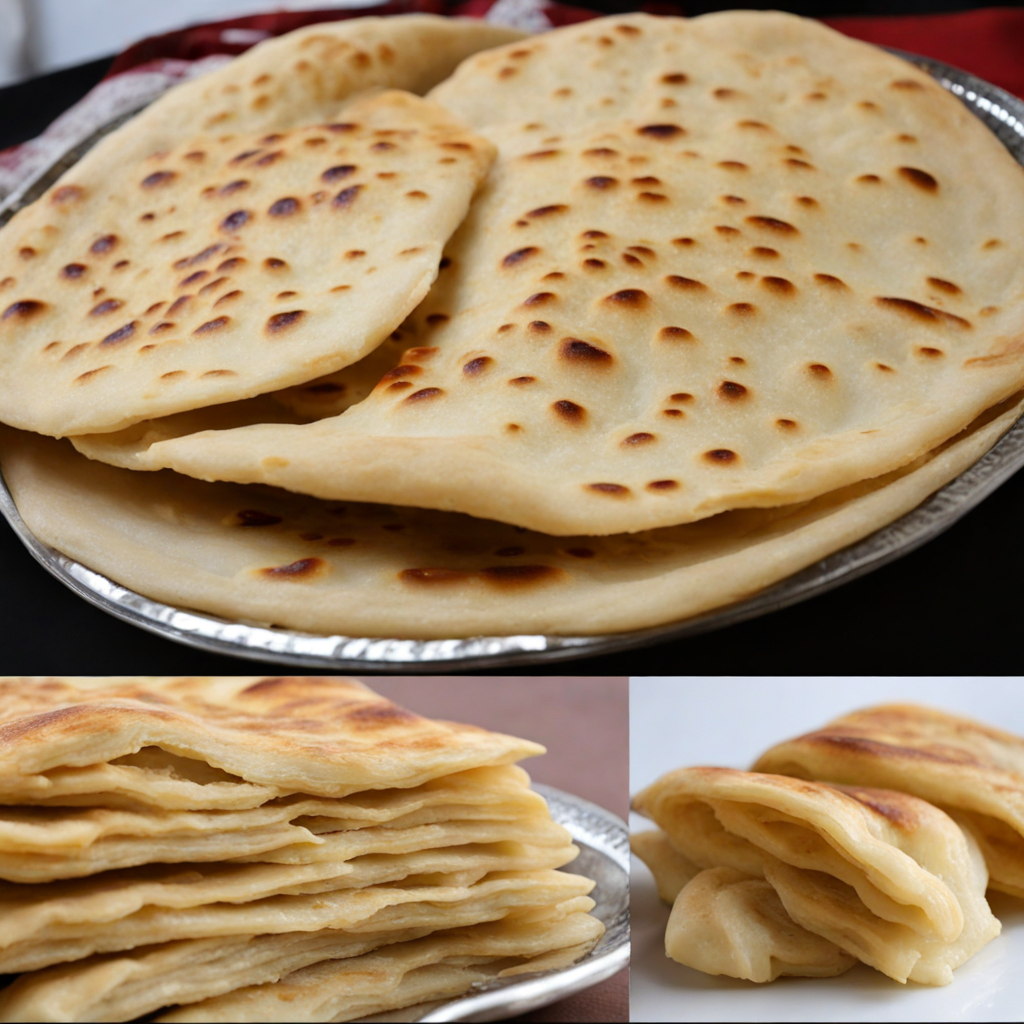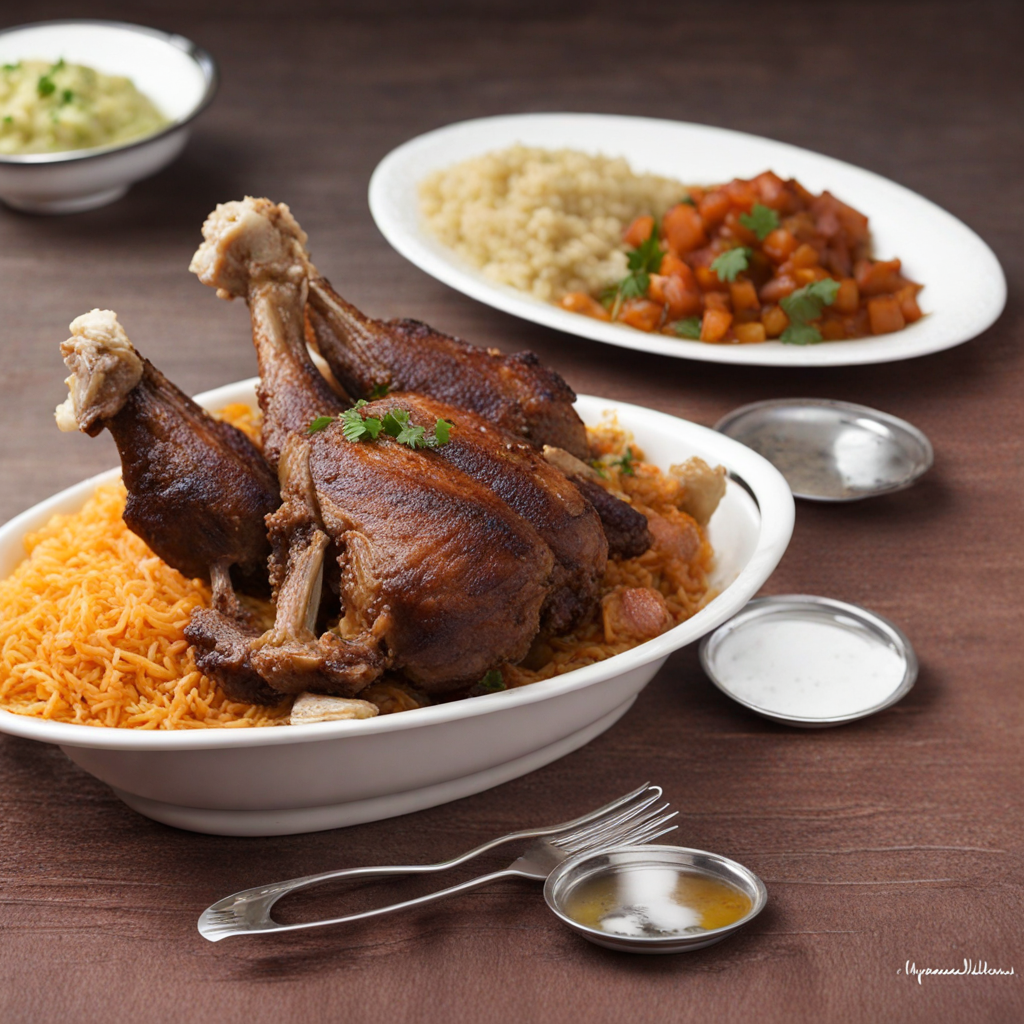Ogda
Ogda is a traditional Yemeni dish that captivates the palate with its rich, aromatic flavors and vibrant presentation. At its core, Ogda is a hearty stew that highlights a unique combination of spices, such as cumin, coriander, and turmeric, which work in harmony to create a fragrant base. The dish typically features tender pieces of lamb or chicken, slow-cooked to perfection, allowing the meat to absorb the complex flavors of the spices. The addition of fresh vegetables, often including tomatoes, potatoes, and green peppers, not only enhances the texture but also adds a burst of color that makes Ogda visually appealing. One of the standout characteristics of Ogda is its use of fenugreek, which lends a distinctive, slightly bitter undertone that balances the dish beautifully. The stew is usually served with a side of fluffy, warm rice or traditional flatbreads, allowing diners to soak up the savory sauce. This combination of textures and flavors creates a satisfying meal that warms the soul and excites the taste buds, making it a beloved choice among locals and visitors alike. Ogda is more than just a meal; it is a cultural experience that invites you to explore the culinary traditions of Yemen. Often prepared for family gatherings or special occasions, it embodies the essence of Yemeni hospitality. When enjoying Ogda, you are not only savoring a delicious dish but also sharing in the stories and heritage of a vibrant culture. Whether you are new to Yemeni cuisine or seeking to expand your culinary horizons, Ogda promises an unforgettable taste adventure that is both comforting and deeply flavorful.
How It Became This Dish
The History of ‘عقدة’ (Aqda) from Yemen: A Culinary Journey #### Introduction ‘عقدة’ (Aqda) is a traditional Yemeni dish that reflects the rich tapestry of Yemen's cultural and culinary heritage. As a flavorful representation of the country's history, Aqda showcases the fusion of local ingredients, regional influences, and the traditions passed down through generations. While it may not be as widely known as some other Middle Eastern dishes, Aqda holds a special place in Yemeni cuisine and embodies the spirit of communal gatherings and familial ties. #### Origins of Aqda The origins of Aqda can be traced back to the mountainous regions of Yemen, where the unique climate and geography have fostered a diverse array of agricultural products. The dish primarily consists of a mixture of rice and meat, typically lamb or chicken, seasoned with an array of spices, including cumin, coriander, and turmeric. The name "Aqda" itself has roots in the Arabic word "عقد" meaning "to bind" or "to tie," which may refer to the way the ingredients are combined and cooked together, symbolizing unity. Historically, Yemen has been a crossroads of trade and migration, leading to a culinary exchange that has heavily influenced local dishes. The Sabaean civilization, which flourished in Yemen around the 10th century BCE, is often credited with the earliest agricultural practices in the region. The cultivation of grains and spices during this period laid the foundation for many Yemeni dishes, including Aqda. The dish likely gained prominence with the rise of the Himyarite Kingdom (around 110 BCE to 525 CE), which expanded trade routes and brought new flavors and techniques to Yemeni kitchens. #### Cultural Significance Aqda is more than just a dish; it is a symbol of Yemeni hospitality and community. Traditionally served during festive occasions, family gatherings, and weddings, Aqda embodies the warmth and generosity of the Yemeni people. The preparation of Aqda is often a communal event, with family members coming together to share in the cooking process. This collaborative effort reinforces social bonds and strengthens familial ties, reflecting the importance of community in Yemeni culture. In Yemeni society, food is a medium of expression, and serving Aqda to guests is a sign of respect and honor. The dish is often accompanied by traditional side dishes, such as salta (a stew made from vegetables and spices) and a variety of pickles, enhancing the dining experience. The ritual of sharing Aqda is a way to celebrate life's milestones, from weddings to religious holidays, and it plays a vital role in maintaining cultural identity amidst the challenges of modernization. #### Development Over Time As Yemen entered the 20th century, the influences of globalization began to seep into its culinary practices. While traditional recipes were preserved, variations of Aqda emerged, reflecting changing tastes and the availability of ingredients. Urbanization led to the introduction of new cooking methods, and the dish started to appear in restaurants, catering to a broader audience. Despite these changes, the essence of Aqda remained unchanged, embodying the flavors and traditions of Yemen. The Yemeni diaspora, particularly in countries such as Saudi Arabia, the United States, and the United Kingdom, has played a significant role in the evolution of Aqda. As Yemenis settled abroad, they brought their culinary traditions with them, adapting recipes to suit local ingredients while keeping the spirit of Aqda alive. In this way, the dish has transcended geographical boundaries, allowing more people to experience the rich flavors of Yemeni cuisine. #### Ingredients and Preparation The preparation of Aqda is a labor of love, often involving multiple steps and a careful selection of ingredients. The primary components include rice, meat, and a blend of spices that are characteristic of Yemeni cuisine. The rice is typically soaked and then parboiled before being layered with the meat, which is usually marinated in a mixture of spices, garlic, and onions. The dish is slow-cooked to allow the flavors to meld, often in a traditional clay pot known as a "tannour" or "dug." Variations of Aqda can be found throughout Yemen, with regional differences in cooking techniques and ingredient choices. In coastal areas, for example, seafood may be incorporated, while mountainous regions might focus on locally sourced meats and herbs. The adaptability of Aqda to different local ingredients is a testament to its enduring appeal, allowing it to remain relevant in a rapidly changing culinary landscape. #### The Role of Aqda in Modern Yemen In contemporary Yemen, Aqda faces challenges due to economic hardships, conflict, and the impact of globalization. Traditional cooking methods are at risk of being overshadowed by fast food and convenience meals, threatening the preservation of age-old recipes. However, there is a growing movement among Yemeni chefs and home cooks to revive and promote traditional dishes like Aqda, ensuring that the culinary heritage is not lost. Social media has also played a crucial role in this revival, with Yemeni food enthusiasts sharing recipes, cooking tips, and personal stories related to Aqda. Online platforms allow for a renewed appreciation of the dish, encouraging younger generations to engage with their culinary roots. Food blogs and cooking channels have introduced Aqda to a global audience, showcasing the beauty and richness of Yemeni cuisine. #### Conclusion Aqda is more than just a meal; it is a celebration of Yemeni culture, history, and community. Its origins in the fertile lands of Yemen, combined with the influences of trade and migration, have shaped a dish that resonates with the spirit of the Yemeni people. As Aqda continues to adapt and evolve, it remains a vital link to the past and a symbol of resilience for future generations. The communal aspect of preparing and sharing Aqda transcends mere sustenance, reinforcing the ties that bind families and communities together. In a world that is constantly changing, Aqda stands as a delicious reminder of the importance of tradition, hospitality, and the joy of sharing a meal with loved ones.
You may like
Discover local flavors from Yemen


